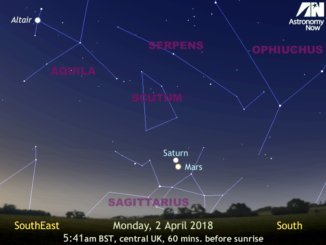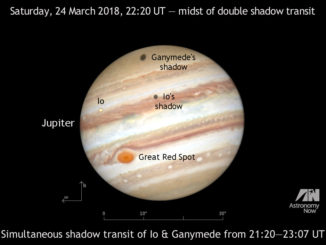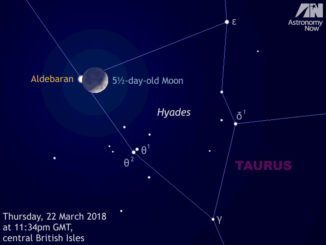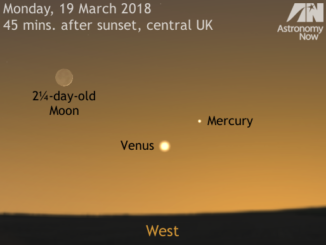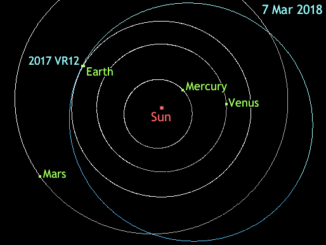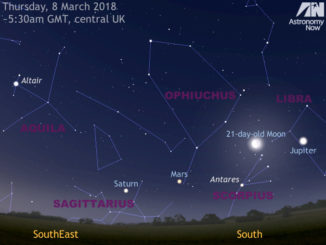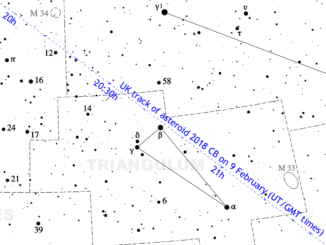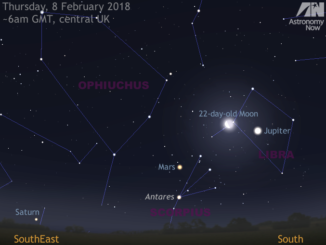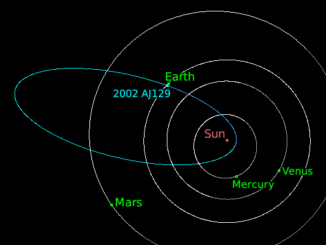
See the young crescent Moon meet Venus at dusk on 18 April
Observers in Western Europe should try to locate Venus low in the western sky an hour after sunset. The 3-day-old slim crescent Moon acts as a convenient guide, located some 12½ degrees (or half the span of an outstretched hand at arm’s length) to the upper left of the brightest planet on 18 April. Prominent star Aldebaran lies in the same low-power binocular field of view as the Moon too.

